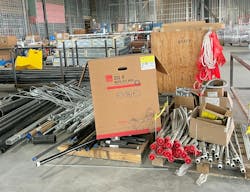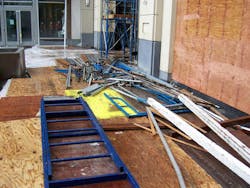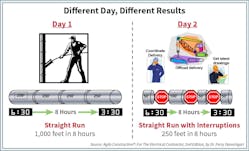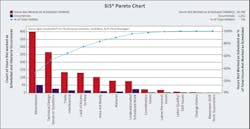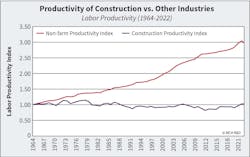Productivity, like any other word, is very often left to interpretation of the user. Unless it’s clear what it is supposed to represent, it could be a very confusing means of measurement. Definitions of productivity can relate to economic factors or individuals. An inquiry in any search engine will result in something like:
“Productivity, in economics, measures output per unit of input, such as labor, capital, or any other resource. It is often calculated for the economy as a ratio of gross domestic product (GDP) to hours worked.”
Labor productivity may be further broken down by sector to examine trends in labor growth, wage levels, and technological improvement. Corporate profits and shareholder returns are directly linked to productivity growth.
At the corporate level, productivity is a measure of the efficiency of a company’s production process. It is calculated by measuring the number of units produced relative to employee labor hours or by measuring a company’s net sales relative to employee labor hours. Here’s a quick summary to make sure we’re all on the same page at this point.
- Productivity, in economics, measures output per unit of input.
- When productivity fails to grow significantly, it limits potential gains in wages, corporate profits, and living standards.
- The calculation for productivity is output by a company divided by the units used to generate that output.
- Auto giant Toyota and online marketplace king Amazon are prime examples of businesses with an impressive level of productivity.
- Productivity in the workplace refers simply to how much work is done over a specific period.
Ask ChatGPT the same question, and (depending on what you type into the prompt) you’ll get something like this:
“Productivity generally refers to the measure of efficiency and effectiveness in completing tasks or achieving goals, often in relation to the resources utilized. It is a key concept in various fields, including economics, business, and personal development. Productivity can be assessed at individual, organizational, or societal levels and is typically expressed as the ratio of output to input.”
In the context of work or business, productivity is often associated with the amount of output (goods, services, or work) produced per unit of input (time, labor, capital, etc.). Higher productivity implies that more is accomplished with the same or fewer resources, reflecting efficiency improvements.
These definitions or measurements leave a lot to be desired for the electrical contracting community about how to measure, correct, and improve labor productivity. All the measurements are related to the system’s output and not the outcome, as noted in ASTM E2691-20: Standard Practice for Job Productivity Measurements. They also do not help contractors define the waste to improve productivity.
In construction, the phrase “productive labor” is used to define an individual’s pace of work. Both of these methods (the economic and individual productivity measurements) make one flawed assumption — everything that labor does contributes to productivity. One visit to most jobs will quickly prove that assumption wrong. For example, the job-site environment depicted in the Photos shows the realities of activities that have nothing to do with individual pace of work. In fact, you could have the most productive, well-trained, motivated electricians who simply cannot get their work done because other trades’ materials are in the way.
To define the productive activities, you should start by identifying the wasteful activities. The Table shows a list of wasteful activities on a job site. These activities can consume more than half of the labor’s time and kill productivity. Even though the output gets corrected “eventually,” the wasteful activities still drive unnecessary costs and time in construction. The customer may be happy with the final product because they didn’t have to pay as much or wait as long to get it. For example, the role of electrical inspectors is to uphold the National Electrical Code (NEC) requirements; however, when a foreman has to double-check his journeyman’s work to make sure it’s correct before it even gets to final inspection, that is waste — and this doesn’t even take into account the time it will take to correct the work if it’s wrong.
Once the waste is understood, now it needs to be measured. Before you do that, however, let’s take a look at two consecutive days on the same hypothetical job site.
Figure 1 depicts the potential differences on a job site with and without interruption. On both of these days, the labor will be considered productive because:
- They showed up on time.
- They did everything they were told to do.
- They got paid in full for a full day of work.
So why would one day be considered more productive than the other? Because as willing and productive of labor as you might have on the job site, for the workers to be able to produce an outcome, they need to be able to do the work that they contracted will get paid for as planned and scheduled. Ask yourselves, when are you going to be able to catch up with the lost time when all the days are spoken for?
To improve productivity outcomes and reduce the impact of labor force shortage errors, “go-backs,” and waste have to be identified, categorized, and quantified. These issues used to be felt only by the trade contractors, where productivity directly impacted their pocketbooks. However, given the ongoing labor shortage, the issues with on-time and on-budget project deliveries will persist for general contractors too.
To improve this situation, all parties in construction need to focus on the data-driven approach to reduce waste. Our February 2021 Job-Site Intelligence column, “Managing Schedule Changes on the Job Site,” gives how-to guidance on using agile project scheduling (APS) to connect the management of work, effort, and time between all parties on a job site, using data not just “coordination meetings” and “conversations” to raise and resolve problems. Agile construction techniques provide a way to identify trades’ obstacles and work progress, which neither lean nor IPD processes were able to achieve on their own.
The tools to make this change happen have been discussed in many of MCA’s previous articles in EC&M, including:
- Digitalization of the work to be performed in the format of a work breakdown structure (WBS).
- Measurement of production rate and its acceleration and deceleration.
- Daily schedules, which identify, categorize, and quantify the obstacles.
- Feedback to the company and project manager.
Once you have the activities on the job site categorized, you can then use established methods to measure and reduce the impact of the non-value transfer activities (NVTA) and increase the value transfer activities (VTA). Figure 2 shows one of these measurements as well as the before and after improvements. One of the established tools to measure NVTA is SIS(R), which is part of ASTM E2691 for Common Cause variation management. Figure 3 is a sample of the obstacle activities on a job site that contribute to the NVTAs.
To move this viability further upstream, Staff Electric Company in Milwaukee is using a collaborative tool (DCI™) to enable AI application from the time a job is bid to the closure of it. The NVTAs start at the preconstruction phase of any project and continue to its closure and commissioning. Figure 4 shows the predictive nature of the DCI.
In conclusion, for five decades the construction industry has continued to stagnate on the labor productivity front (Fig. 5). Now, with fewer labor “inputs,” this equation will certainly result in less construction put-in-place (CPIP). Paying attention to waste and improving the value transferred by construction trades has gone from an electrical contractor’s competitive advantage to an industry requirement.
Any electrical contractor would say they are interested in productivity improvement, but using the correct definition, measurement, and resulting data to get there is the key. From the job-site intelligence you can gain in reviewing our regular columns to the application of agile construction principles, reducing waste is not as complicated as it seems. It starts in the work environment — not in spreadsheets or accounting software. There’s a lot of wasted effort, cost, and time on your job sites right now. The best place to start is to get out there and observe, measure, and think systematically of what you can do to make it better.

